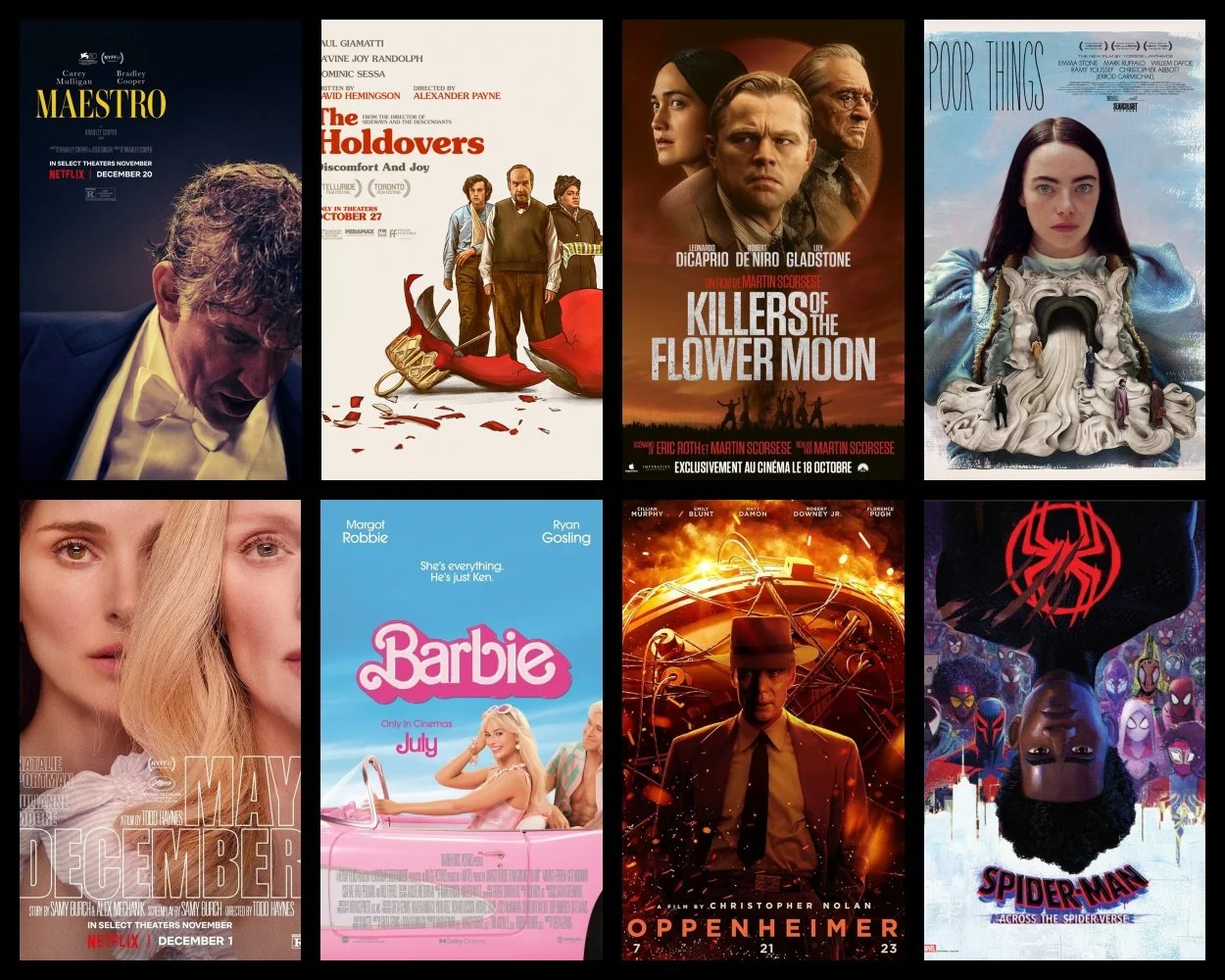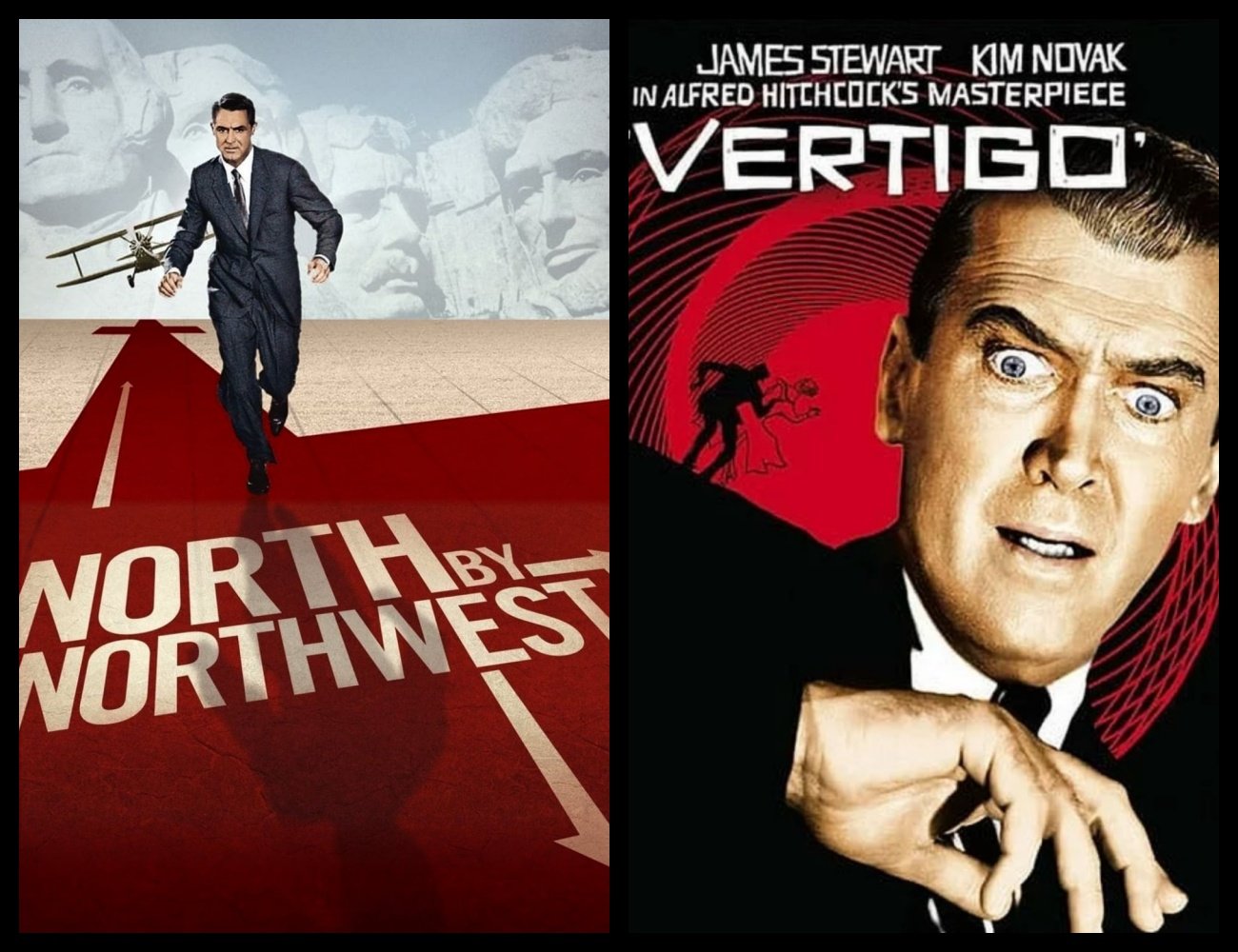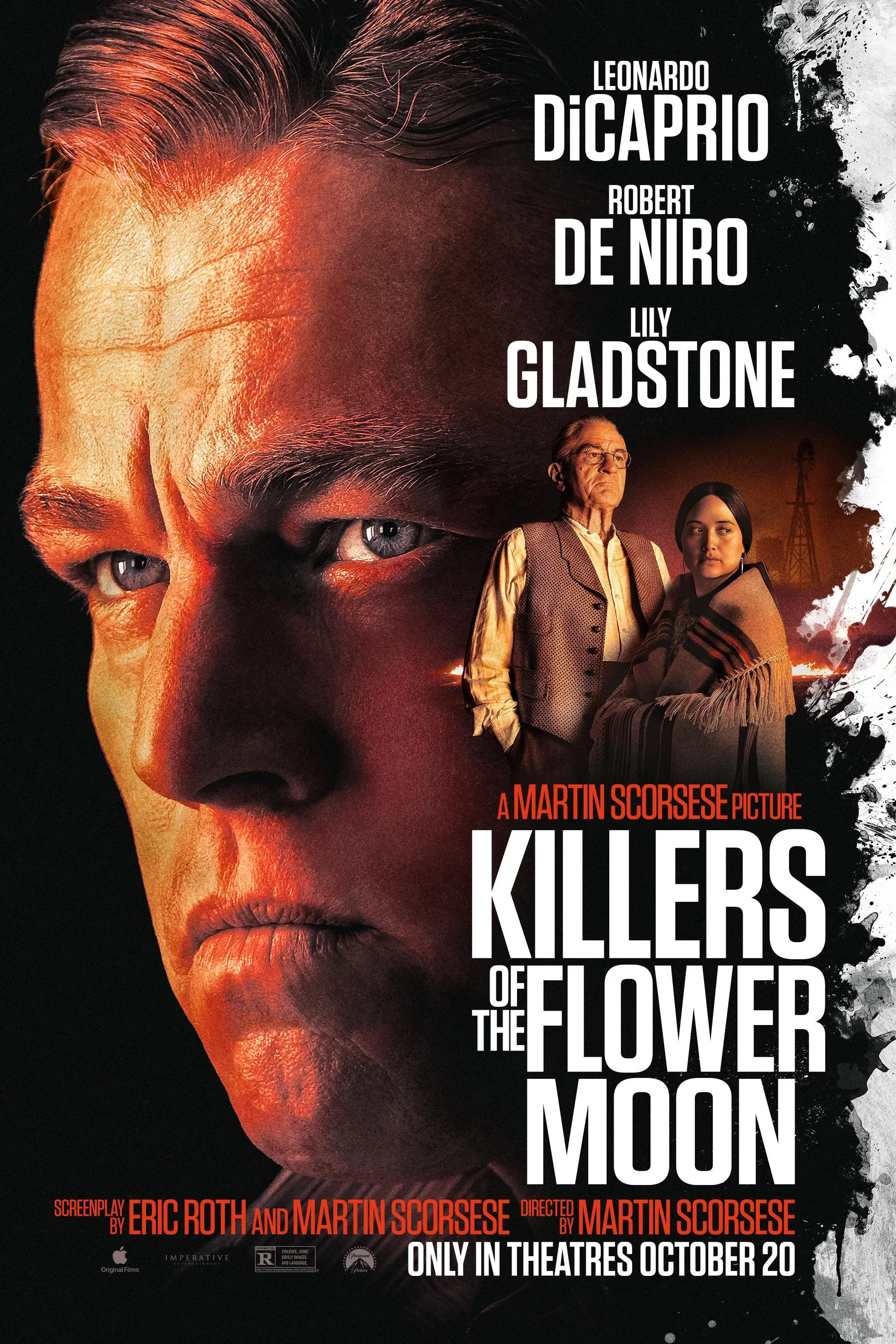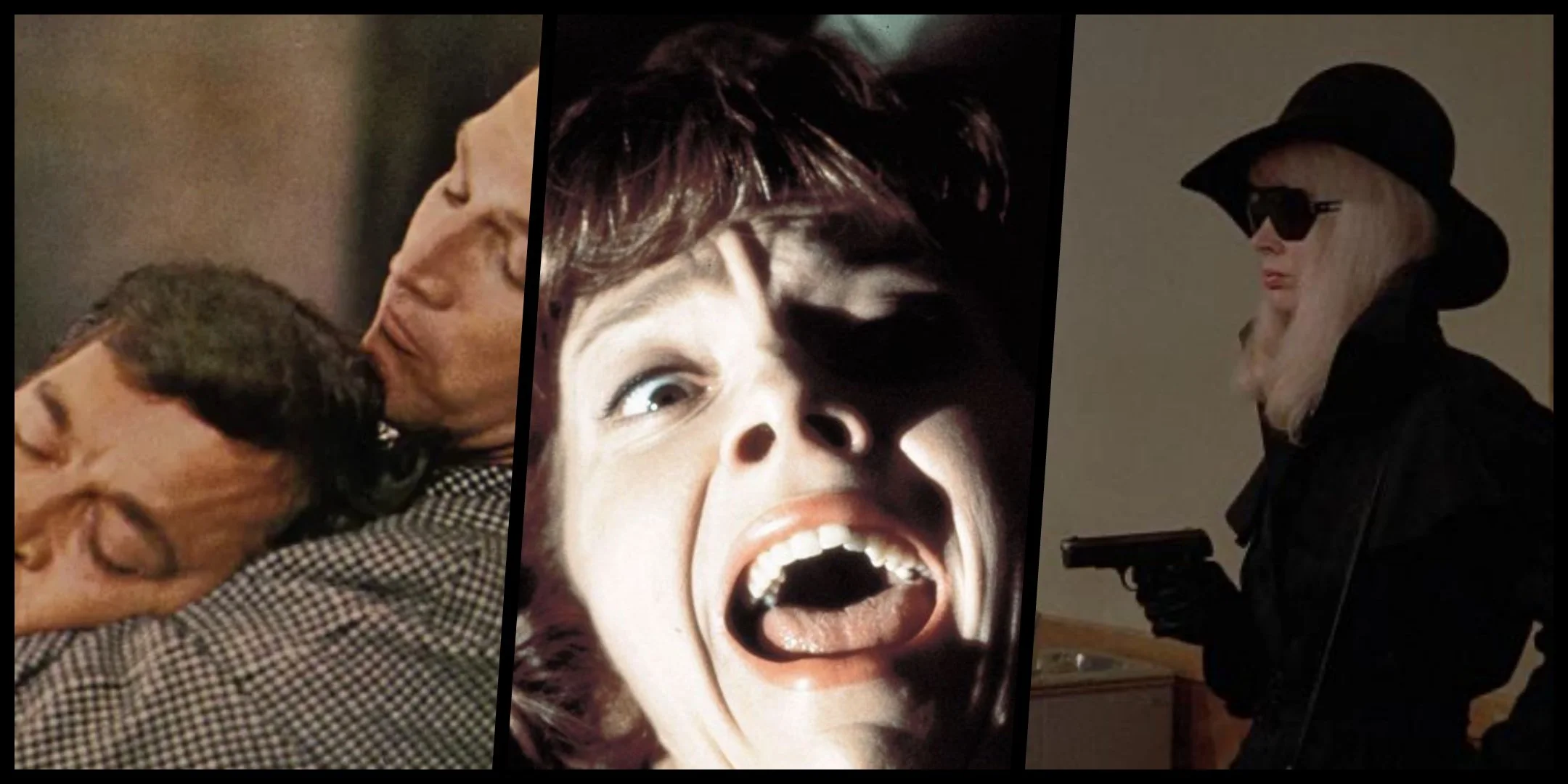SECRET MOVIE CLUB'S THOUGHTS ON THE BIG MOVIES OF 2023 (PART 1 OF 2) by Craig Hammill
Dear Secret Movie Clubbers: After our hiatus, we are back to movie writing and movie blogging. In fact, we want to work in 2024 to really be part of co-writing the next chapter in cinema culture with worthwhile movie writing.
If you have an interest in writing for Secret Movie Club, reach out to us at: community@secretmovieclub.com and we’ll go from there.
If you haven’t already, you can also follow us at SECRET MOVIE CLUB ON LETTERBOXED
So. . .for better or for worse. . .here is part 1 of a very long-form blog extravaganza collecting a number of the reviews we posted recently on LETTERBOXED about the key pop culture movies of 2023. We want to hear your thoughts! Feel free to comment.
And more to come.
POOR THINGS (2023)
One of the more fascinating aspects of POOR THINGS is how the production design (by Shona Heath and James Price) is a strangely apt visual metaphor for filmmaker Yorgos Lanthimos's directorial voice.
Lanthimos wanted…
Read More
The Hitchcock Meta-Theme & the conflict at the heart of his work by Craig Hammill
Although one should only take this just so far, it is interesting how some director’s bodies of work can often be distilled to a single meta-story.
Almost all of Martin Scorsese’s movies tend to be about a very flawed central character looking for some kind of redemption who goes through hell and survives at the end.
And in Alfred Hitchcock' movies, the meta theme of an innocent person accused of a crime they didn’t commit and needing to clear their own name crops up in too many of his movies to be coincidence. The Lodger, The 39 Steps, The Lady Vanishes, Young and Innocent, Rebecca, Saboteur, Spellbound, Strangers on a Train, I Confess, The Wrong Man, North by Northwest, Frenzy all carry DNA of this plot.
Hitchcock was very self-aware of this and…
Read More
HITCH AT THE SUMMIT: NORTH BY NORTHWEST & VERTIGO by Craig Hammill
When Hitchcock made 1958’s Vertigo and 1959’s North by Northwest back to back, one could argue he was at the peak of his powers.
Between 1951 and 1963, Hitchcock directed 13 feature films, none of them bad or even mediocre, all of them good to all-time classic level AND shepherded a television show Alfred Hitchcock Presents among other endeavors (including vinyl albums, mystery books, etc) to great success.
This is the era where Hitchcock made himself an industry. And that’s not written disparagingly. In the brutal ever-changing climate of American movie making, Hitch was smart to become a household name. It allowed studios to view Hitchcock as bankable as the stars in the movie.
In a way, Hitchcock was finally reaping the fruits of 30+ years of hard labor: a Hitchcock movie or TV show was now a genre unto itself. And this gave Hitchcock greater power in choice of story, budget, creative control.
What’s fascinating here is that…
Read More
REAR WINDOW: STILL THIS WRITER'S HITCHCOCK ALL-TIMER by Craig Hammill
Somewhere along the way I developed a personal metric for those filmmakers I thought were all-timers. If they had made a reasonable amount of movies and five of them could be considered all-time classics, they were among the best.
Alfred Hitchcock is one of the very few who arguably has MORE than five titles that could be considered all-time greats. He has TEN! The 39 Steps, The Lady Vanishes, Shadow of a Doubt, Notorious, Strangers on a Train, Rear Window, Vertigo, North by Northwest, Psycho, and The Birds make up a helluva rare resume. And I bet there are readers here who would nominate Rebecca, Rope, The Man Who Knew Too Much (either version), The Wrong Man etc to go on that list.
So at a certain point, naming your personal favorite Hitchcock is like…
Read More
PREQUELS, SEQUELS, & THREEQUELS: THE CURRENT MATH by Craig Hammill
A few weeks ago, our family sat down for family movie night to watch this year’s ACROSS THE SPIDERVERSE (dir by Joaquim Dos Santos, Kemp Powers, Justin K. Thompson, written by Phil Lord, Chris Miller, Dave Callaham, Sony, 2023, 140mns). I was excited. The movie did not disappoint. My wife and son (the two biggest fans along with me of INTO THE SPIDERVERSE) thought it was amazing. I really liked the sequel but felt. . .well. . .I felt like the story had been reverse-engineered a bit to turn what was an incredible, self-contained, one off movie into a trilogy. Still, I’m impressed with just HOW GOOD the movie given all the expectations surrounding it (I consider 2017’s INTO THE SPIDERVERSE one of the greatest movies of the 21st century).
ACROSS did get me thinking. We’re living in an accelerated age of…
Read More
Fincher's THE KILLER: An Entertainment with a hidden agenda by Craig Hammill
It’s not often I get to see new movies these days with four children (one just born a month ago!) and Secret Movie Club to run. I’m not complaining. I wouldn’t have it any other way. But watching new movies is critical to keeping Secret Movie Club fresh and dynamic so I figure out how to do it in the nooks and crannies of my life.
Plus, there’s no way I’m passing up the chance to catch the new David Fincher. And much to my surprise, for the second time in as many viewings, a movie that received positive if qualified word of mouth struck me as MUCH better than the reaction it was getting.
Fincher’s new film The Killer stars Michael Fassbender as a killer-for-hire by shadowy rich powerful folks who want to kill other shadowy rich powerful folks. When Fassbender’s Killer botches a Paris job, he returns to his Dominican Republic hideaway to find his romantic partner brutalized to within an inch of her life. Furious (though you wouldn’ t know it from Fassbender’s near expressionless hilarious controlled performance), he goes on a kind of mono-focused rampage to find who’s behind it all.
The Killer feels like Fincher working in…
Read More
Late Period Scorsese: The era of mining complex emotions by Craig Hammill
It’s fascinating to watch a director like Martin Scorsese enter a new period late in his career. 2016’s Silence, 2019’s The Irishman, and 2023’s Killers of the Flower Moon all feel part of a new Scorsese focus. A period where Scorsese devotes all his energies to mining a complex emotion through a stripped down focused style.
Gone are a lot of the flashy camera moves, music cues, and edits of previous eras. Instead Scorsese, collaborating with cinematographer Rodrigo Prieto and long-time editor Thelma Schoonmaker, focuses on “essential cinema”.
You might call this Scorsese’s Mizoguchi period. Scorsese…
Read More
LATE PERIOD HITCHCOCK: TORN CURTAIN, FRENZY, & FAMILY PLOT by Craig Hammill
Late period work by any director usually gets met first with disappointment then respectful reappraisal, rarely with wild acclaim.
Filmmaker Quentin Tarantino is so conscious of the usual trend of diminished quality that he continues to assert his next movie (currently in pre-production), his 10th, will be his last. A keen study of how filmmographies go, Tarantino intends to go out on top with a bullet proof body of work. No surprise, he has also started a family now and may want to be the kind of present father and husband many directors are not.
So it’s with some surprise that in revisiting three of Hitchcock’s final four films-1966’s Torn Curtain, 1972’s Frenzy (the megahit of the trio), and 1976’s final bow Family Plot (the discovery for any Hitchcock fan who has not yet seen it), this writer found himself impressed with just how much gas Hitchcock had left in the tank. These final movies, while flawed at varying levels, find a moviemaker…
Read More
Lars Von Trier's DOGVILLE: When Provocation succeeds in cinema by Craig Hammill
Lars Von Trier’s 2003 DOGVILLE comes at a fascinating point in Von Trier’s overall filmography. Made when the moviemaker still professed (at least in interviews) that he continued to have faith in God (and was a practicing Catholic) but before his very public (to this day) announcement that age and experience had converted him to atheism, DOGVILLE represents one of the world’s most talented moviemakers making both a provocation and an interrogation into human nature and the nature of the divine-at least as we’ve come to understand it in the Judeo-Christian tradition. DOGVILLE is easily…
Read More
THE RETURN/NO RETURN (Parts 9-18): David Lynch's Summation (so far) by Craig Hammill
“Do I contradict myself? Very well then I contradict myself, (I am large, I contain multitudes.)” - Walt Whitman Song of Myself 51
After the stunning sui generis hour of television, filmmaking that is Part 8 of TWIN PEAKS: THE RETURN, any vestigial notions audience members had that they knew where David Lynch’s and Mark Frost’s Season 3/18 hour feature was going were blown to smithereens.
Even in a career resolutely committed to surprising his audience, David Lynch held…
Read More
Hitchcock Experiments: ROPE & THE BIRDS by Craig Hammill
Hitchcock experimented in broad cinematic daylight. Smuggling in wild avant garde experiments garbed in the guise of mass suspense entertainments.
Many times Hitchcock worked to do this in a contained sequence or segment then surround it with more traditional (yet still breathtaking) filmmaking and storytelling: the Salvador Dali dream sequence in Spellbound, the animated dream sequence in Vertigo, the almost unheard of (for that time) 52 cuts in 45 seconds for 1960’s Psycho shower scene. Hitch seemed to understand the audience would allow a little cinematic experimentation as long as a movie still delivered the suspense and narrative goods…
Read More
THE REVEALER OF MYSTERY: Twin Peaks The Return Parts 1-8 by Craig Hammill
Twenty five years after the at first maligned, now celebrated David Lynch movie Twin Peaks: Fire Walk With Me (1992), David Lynch and Mark Frost returned in 2017 to Twin Peaks with their 18 hour Showtime limited series TWIN PEAKS: THE RETURN. Though no one had expected it, they had basically promised us they would do this in both the very first 1990 episode (Season 1 Episode 1’s European pilot), the 1991 Season 2 finale, the 1992 feature film, when Laura Palmer tells FBI Agent Dale Cooper in the Red Room “I’ll see you in 25 years”. At the time, everyone mostly thought this was just some Grade A level David Lynch weirdness.
It turned out to be a promise.
This itself was the equivalent of a batter who points out they’ll be back in 25 years to hit a grand slam, then returns 25 years later and hits that grand slam at the appointed time.
Although the series was released…
Read More












